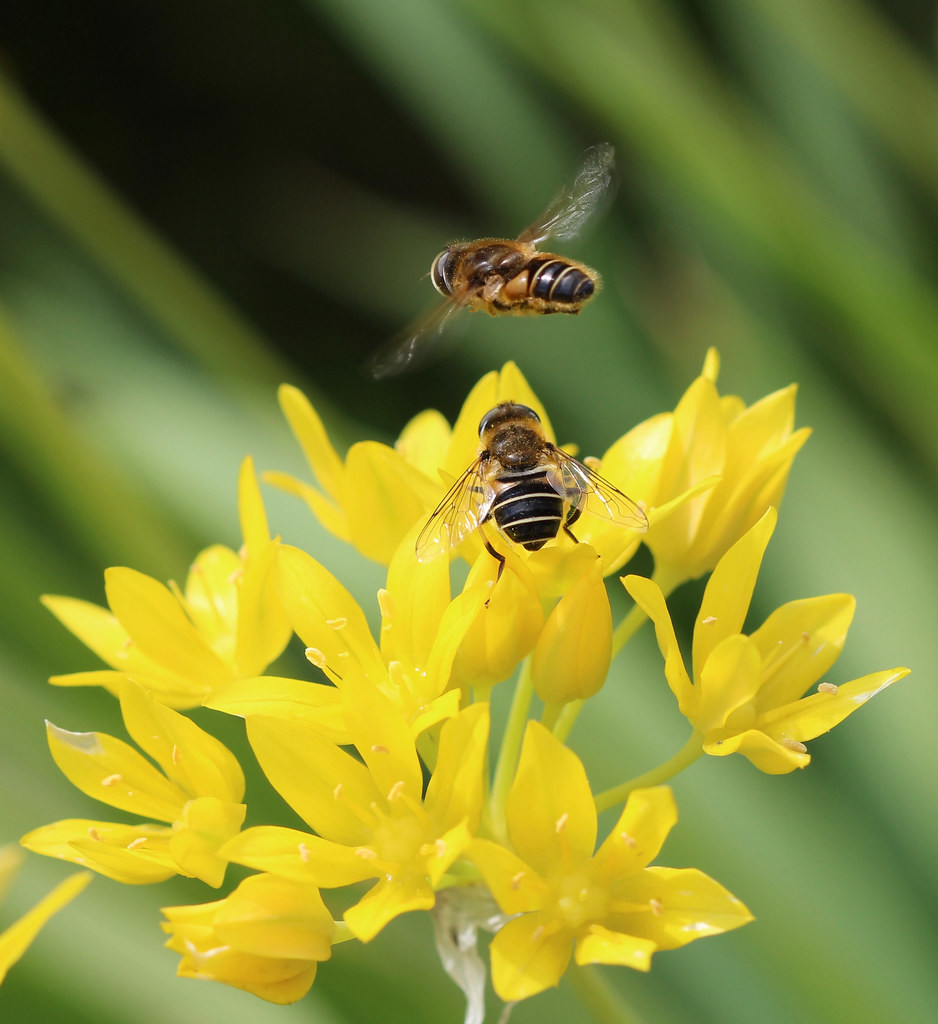If you’ve spent any time on the internet you’ve probably picked up on the fact that our Bees aren’t doing well. In fact many pollinator species aren’t thriving the way our environment and agricultural systems depend on them to do. It’s a pretty big deal and they need our help.
One way we can help is by planting what are called Pollinator beneficial plantings…basically those are plants that bees, butterflies and other important insects use as food and water sources. These plants have more benefits than just supporting insects, though…They can help with water quality, carbon sequestration (they take it out of the air), they can provide jobs to those who design, install and manage plantings (Green Jobs!) and they improve the soil!
Don’t Worry; Bee Happy!
If this all seems overwhelming, don’t worry! Sargent’s Landscape Staff is here to help you with any installation questions you may have and our Garden Center is gearing up answer your questions and point your toward resources that can help! Stop in to find seed mix for bee lawns, as well as straight white clover seed that can be used as a lawn enhancement. We also have a wide variety of plants that serve as pollinator species!
Two additional benefits of improving your lawns to support pollinators is that the introduction of legumes (clover) will ‘fix’ nitrogen from the air to the soil reducing nitrogen fertilizer needs and clovers are resistant to dog urine ‘burning’ and can help with diffusing brown spots if you have pets using your lawns!
The State of Minnesota has a program they are calling Lawns to Legumes.
Basically, if you qualify for the rebate you’ll get up to $350 for your Bee Project. There are a few different ways of going about it and you can find out more by visiting the Board of Water and Soil Resources webpage for in depth details on the Lawns to Legumes program:
The first round of individual assistance applications closed Feb 28 and the next round began March 9th to fund summer and fall installations.
Applications will be awarded through a randomized drawing with priority given to higher priority areas.
Red Wing is in a number one priority area. There has been very high interest in this program with nearly 6,000 applicants in the first offering.
If the program shows promise, state officials will try to bring it back every year. This is not a ‘one and done’ idea, this program represents a goal to reimagine what our landscapes can look like going forward to provide critical habitat for pollinators and still meet the esthetic desires of homeowners.
In addition to converting lawns, pollinator help in the form of ‘pocket gardens’, tree and shrub plantings that support pollinators and pollinator meadows will also be considered for reimbursement. Selections will be weighted to favor many small projects versus a few larger projects to distribute the funding as far as possible.
For a printable overview of the program click here!
In future posts we will share how to over seed existing lawns, trees and shrubs for pollinators, the top 10 perennials and how to create a pollinator meadow.





